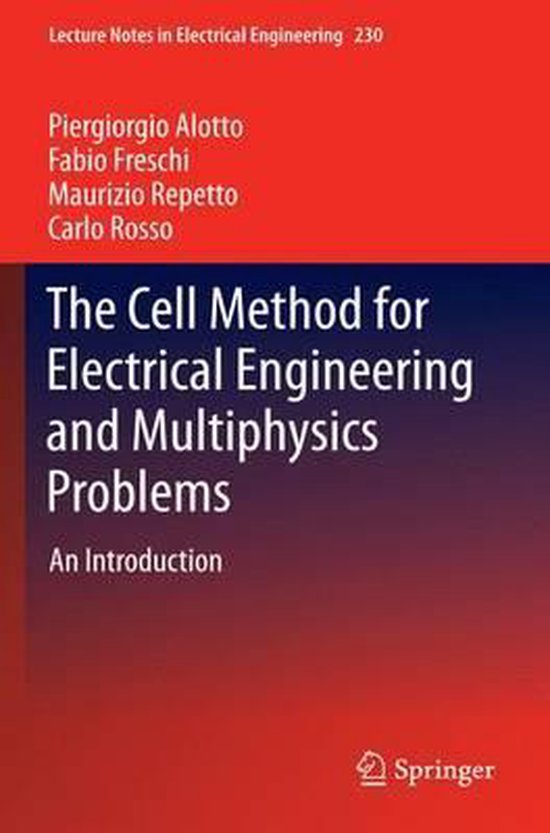
| Taal: | en |
| Bindwijze: | Paperback |
| Oorspronkelijke releasedatum: | 07 juli 2015 |
| Aantal pagina's: | 129 |
| Illustraties: | Nee |
| Hoofdauteur: | Piergiorgio Alotto |
| Tweede Auteur: | Fabio Freschi |
| Co Auteur: | Maurizio Repetto |
| Hoofduitgeverij: | Springer-Verlag Berlin and Heidelberg GmbH & Co. K |
| Editie: | 2013 |
| Extra groot lettertype: | Nee |
| Product breedte: | 155 mm |
| Product lengte: | 235 mm |
| Studieboek: | Ja |
| Verpakking breedte: | 155 mm |
| Verpakking hoogte: | 8 mm |
| Verpakking lengte: | 235 mm |
| Verpakkingsgewicht: | 2292 g |
This book presents a numerical scheme for the solution of field problems governed by partial differential equations: the cell method.
This book presents a numerical scheme for the solution of field problems governed by partial differential equations: the cell method. The technique lends itself naturally to the solution of multiphysics problems with several interacting phenomena. The Cell Method, based on a space-time tessellation, is intimately related to the work of Tonti and to his ideas of classification diagrams or, as they are nowadays called, Tonti diagrams: a graphical representation of the problem's equations made possible by a suitable selection of a space-time framework relating physical variables to each other. The main features of the cell method are presented and links with many other discrete numerical methods (finite integration techniques, finite difference time domain, finite volumes, mimetic finite differences, etc.) are discussed. After outlining the theoretical basis of the method, a set of physical problems which have been solved with the cell method is described. These single and multiphysics problems stem from the authors' research experience in the fields of electromagnetism, elasticity, thermo-elasticity and others. Finally, the implementation of the numerical technique is described in all its main components: space-time discretization, problem formulation, solution and representation of the resulting physical fields.